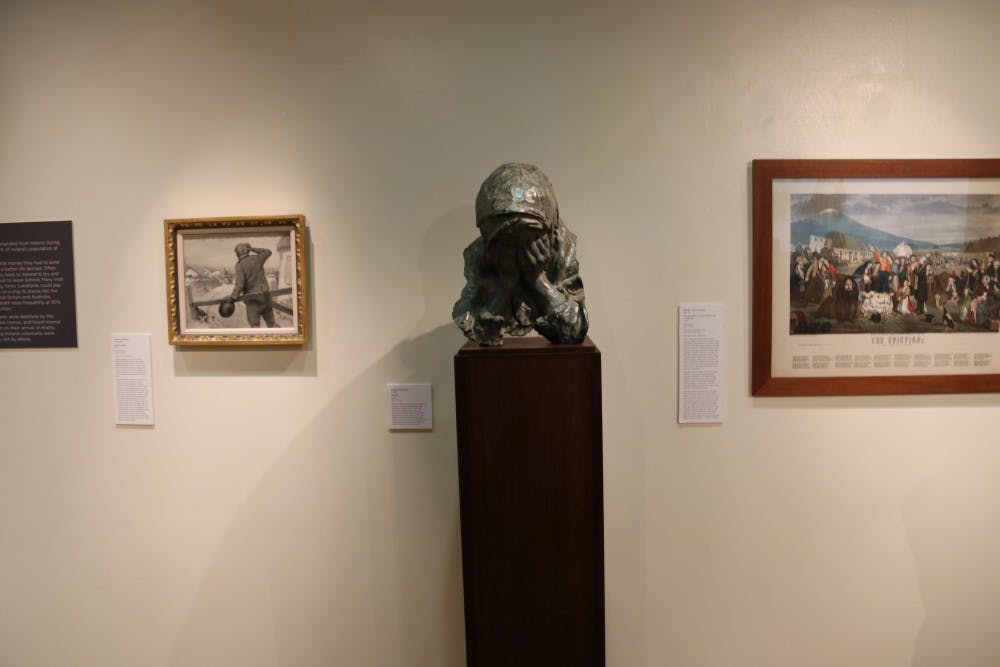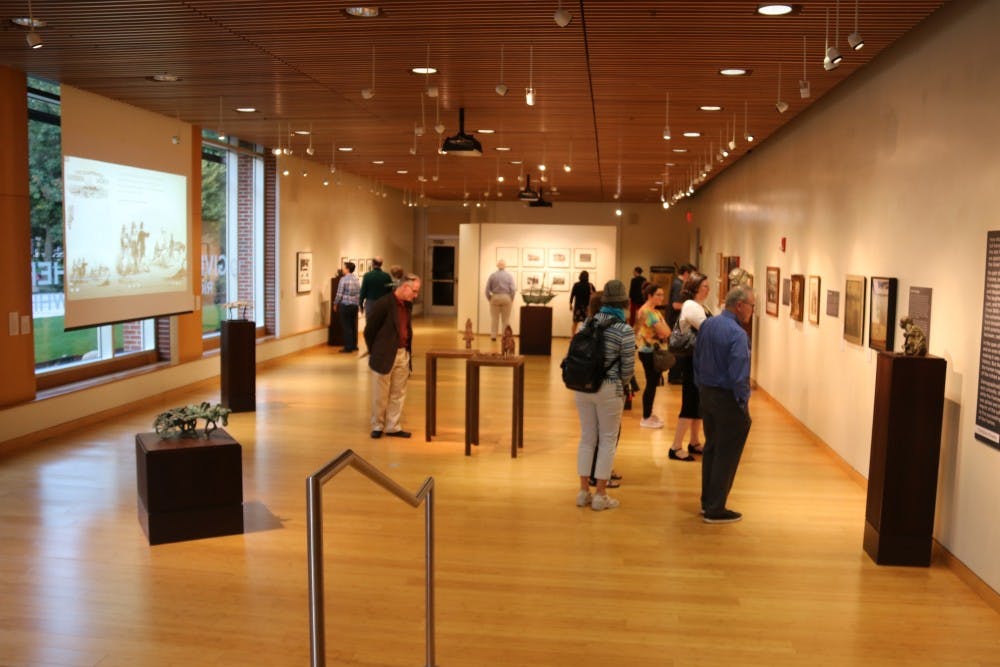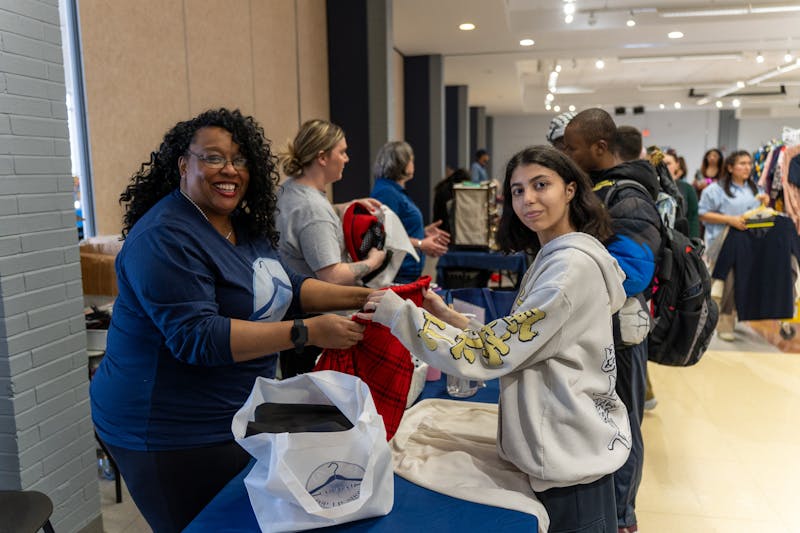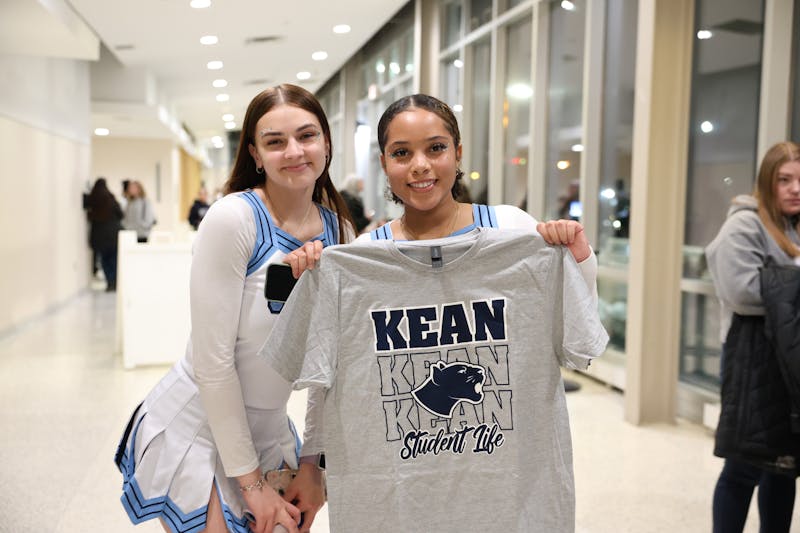
On the evening of Wednesday, Sept. 25, people gathered in the lobby of the Human Rights Institute (HRI) for the opening reception of it's newest exhibit "Tragedy & Tribute: Art Illuminates Ireland's Great Hunger." The event ran from 6:30 p.m. to 8:30 p.m. and created a space for people to focus on this historical event and make connections to the world today.
Normally housed in Ireland's Great Hunger Museum at Quinnipiac University in Hamden, Connecticut, "Tragedy & Tribute: Art Illuminates Ireland's Great Hunger" was loaned to the Human Rights Institute straight through to Dec. 15. The exhibition houses artwork depicting the plight of the Irish during the potato famine that took place from 1845-1849 and the ensuing suffering of the Irish as they tried to emigrate to the United States for better lives for themselves and their families.

Ryan Mahoney and Christine Kinealy, the guest speakers for the opening reception, pose together.
For people like Ryan Mahoney, executive director of Ireland's Great Hunger Institute at Quinnipiac University, and Christine Kinealy, founding director of Ireland's Great Hunger Institute at Quinnipiac University, this night and this artwork was about much more then a reminder of this dark time in Irish history. It was also a way for people to realize that what took place then is happening again.
Kinealy echoes this sentiment when she said "... famine, hunger [and] poverty are about political decisions. They are not inevitable, but we have to be proactive if we want to prevent them and we absolutely have the power to intervene. We're a world full of plenty, so why are people starving? Why are people poor? Why are children going to school hungry? We have the power to stop it. It's a choice, so as Ryan said, if we can get people to think, to debate, to discuss, to have transparency about the issue that's very healthy."
Mahoney agreed with Kinealy stating, "And, something like this makes those topics accessible. People get a chance to look at the artwork and start asking questions about these uncomfortable topics. They're topics that people don't want to talk about, but if we don't talk about them, if we don't learn about them, then we're not going to make progress for future generations."
These intentions came through clearly in art work like Roimh-after by Robert Ballagh, a painting depicting a growing potato plant, one half growing beautifully from sunshine and the other half-wilting away as thunderstorms and lightening raged, a representation of the change Ireland went through after the potato famine hit them. Many of the paintings and sculptures throughout the gallery follow this kind of imagery, depicting the change that came over Ireland and the horrifying conditions they had to go through to travel to America.
Elizabeth Cudworth, a junior at Kean University, had this to say about her feelings on the artwork, "I'm 50 percent Irish, [so] it's pretty close to home because my great grandmother emmigrated during that time. And my grandpa loves to tell stories about how she came and she was forced out. She didn't come by choice. She was evicted, so some of the exhibits kind of touch on that a little bit."

Despite the hard subject matter, the artwork did it's job as Cudworth explained how the depictions of Ireland back then connected to the world today.
Cudworth said, "We still have a lot poverty and famine especially [in] other countries. We kind of take for granted [what] we have. I think it's still an issue."
For anyone who wants to see the display themselves, the exhibit is located in the Human Rights Institute (HRI) attached to the Nancy Thompson Library Learning Commons (NTLC). It will remain there until Dec. 15. For anyone who would like to see more of the art, Mahoney encourages them to take a trip down to the Quinnipiac University in Hamden, Connecticut to visit Ireland's Great Hunger Museum or Ireland's Great Hunger Museum Website for more information.







